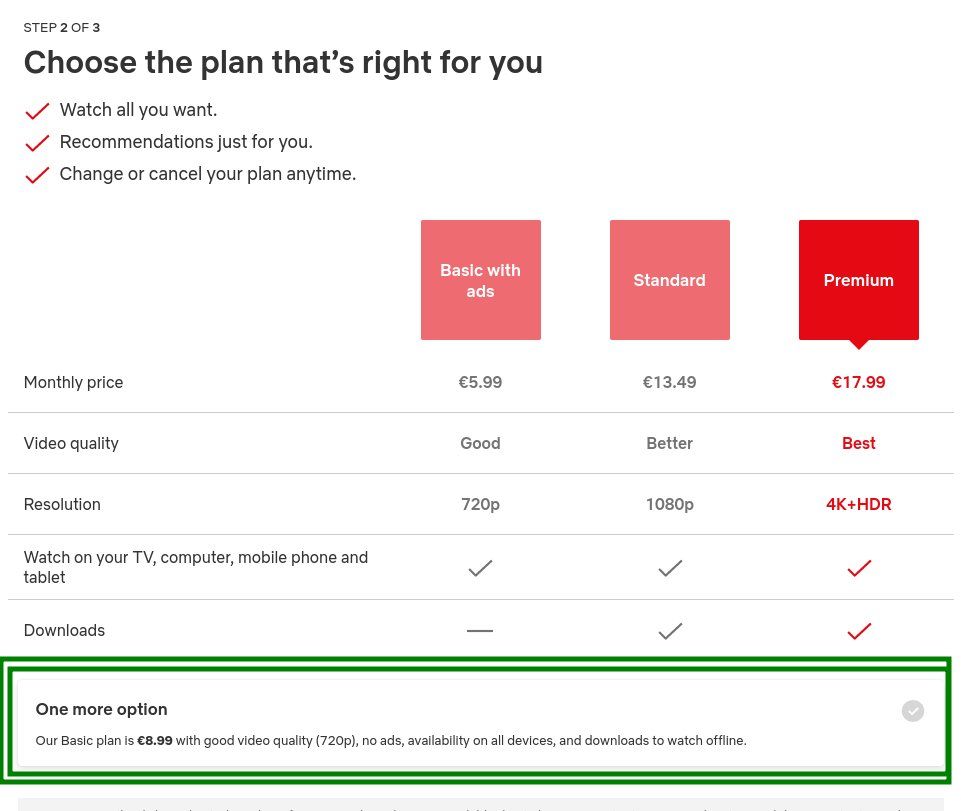Netflix is one of the most popular streaming services in the world, offering a wide range of movies, TV shows, and original content to millions of subscribers. However, the company has recently come under fire for using dark patterns to mislead customers into paying for more expensive plans.
One of the most prominent examples is the Misdirection dark pattern, which Netflix uses to hide its cheapest pricing tier. While the company offers four plans, it only displays three on its pricing page. The second cheapest option, which offers standard definition streaming with the ability to download, is only visible if the user clicks on a small link below the other plans.
This may seem like a minor issue, but it can significantly impact users trying to choose the right plan for their needs. By hiding the second the cheapest option, Netflix is pushing users towards the middle and top tiers, which cost €12.99 and €17.99 per month, respectively. These plans offer HD and Ultra HD streaming and allow users to watch on multiple screens simultaneously, which is likely to attract many customers.
However, some users may be interested in the cheaper plan, which offers standard-definition streaming and allows users to watch on one screen at a time with the ability to download content. This plan costs only €7.99 per month, which is significantly cheaper than the other options. By hiding this option and making it difficult to find, Netflix is effectively tricking users into paying more for their subscriptions than they may have intended.

Dark patterns are becoming increasingly common among online companies as they look for ways to increase their revenue and profit margins. However, this approach can have serious consequences for user trust and loyalty. When users feel like they have been tricked or manipulated, they are less likely to continue using the service or recommending it to others.
Netflix has already faced criticism for its use of dark patterns, and it remains to be seen whether the company will change its approach in the future. However, as consumers become more aware of these tactics, companies will likely be forced to be more transparent and honest in their pricing and marketing strategies.
In conclusion, Netflix's use of the Misdirection dark pattern is a clear example of how companies can mislead and manipulate their customers for financial gain. As consumers, it is vital to be aware of these tactics and to hold companies accountable for their actions. By doing so, we can help ensure that online services are fair, transparent, and trustworthy for everyone.
Found by: Λntonio Rull and fosdem-bsd-devroom


